An off season cycling training plan is designed to help cyclists maintain their fitness and improve their performance during the off-season.
During this time, cyclists can take a break from structured training.
They can focus on recovery and work on developing skills and improving weaknesses for next season, as they may not have had time for this during the normal cycling season.
One important aspect of off-season training is maintaining aerobic fitness. However, it’s important not to overdo it during the off-season, as rest and recovery are also important components of training.
In addition to maintaining aerobic fitness, off-season exercise plans often include strength training and skill development.
Your strength training regimen can help improve power, speed, and endurance on the bike while also reducing the risk of injury.
Key Takeaways
- Tailor your training to your fitness level to avoid injury.
- Keep a journal of your progress to track your endurance and fitness.
- Interval training is a great way to increase speed and fitness.
- Mix up your training to avoid fitness plateaus and the risk of getting bored.
- Include at least one day’s rest per week in your training schedule.

Assess Your Goals and Fitness Level
The first step in setting up an effective annual training plan is to determine your current level of fitness. Then you can set goals for the coming season and structure your off-season training plan accordingly:
- Start by measuring your heart rate, cardiovascular endurance, and body composition. Use tools like a fitness test app or timed runs to do this.
- Alternatively, consult a cycling fitness coach, especially if you’re new to cycling. Get them to help evaluate your current fitness level.
- A fitness test will help you identify your strengths and weaknesses and help you plan your training in the off-season. Pick one or two areas, like sprinting or hill climbing, and concentrate on those.
If you struggle with muscular endurance or recovery, this is the perfect time to improve these areas.
- Once you have a baseline level of fitness, you can then determine realistic goals.
- This is also the time to decide whether you wish to train for a specific event or race.
- To create your plan, make sure that you include workout recovery periods and rest days. Make sure that you plan various workouts, including endurance rides, interval training, strength training, and hill climbs.
Does Off Season Training Cycling Plan Work?
From personal experience, Yes! Here’s an example – a cycling buddy and I signed up for a big organized cycling event that was happening at the end of April. The plan was to take on a 225km ride with a decent amount of elevation in the mix (in the end, we did 167km, but that’s another story!).
We both started training for the event in October, and the volume of training for us both looked like this:
- Me: 180 hours of cycling (a mix of indoor and outdoor), plus 24 hours of strength training
- Them: 77 hours of cycling (indoor and outdoor) and 3 hours of rowing machine workouts
The result? I had a great day out! It wasn’t particularly challenging, and the climbs didn’t really trouble me. I could definitely have ridden further, faster.
Looking at my heart rate data, it backed up my RPE – I didn’t once go into zone 4 (Threshold) and spent 65% of the time in zone 2 (Aerobic) with just 15% in zone 3 (Tempo).
On the other side, my buddy had, well, let’s say, a more tricky day out! One climb, in particular, caught them out and nearly had them “abandoning”, but fair play, they ground it out and carried on to the end.
Their heart rate spent 45% of the ride in zone 3 and 5% in Threshold.
Overall, I was glad I put the off-season training effort in and enjoyed the ride much more!
Plan Your Training Schedule
Now that you have a basic training plan in place, it’s time to create a schedule with specific times and dates in place.
Set training goals
Based on your current fitness, start by identifying areas for improvement and focus on specific aspects such as endurance, speed, or strength.
Set realistic and measurable goals that challenge you but are achievable within the given time frame.
Break down your goals into smaller milestones and track your progress regularly. Consult with a coach or experienced cyclist to ensure your goals align with your overall objectives.
Stay motivated, stay disciplined, and get encouragement as your fitness level goes to new heights!
Schedule HIIT training sessions
Your training schedule should include a variety of exercises such as cardio, strength training, and flexibility exercises. You can add high-intensity training interspersed with yoga or pilates to help you recover.
High-intensity training (HIIT) exercises can include running or rowing if you want to mix things up and do some cross-training, which can fend off boredom setting in if you keep repeating the same routine.
HIIT sessions help to improve your anaerobic fitness and are a great way to break up the monotony of long slow endurance workouts.
High-intensity training sessions will include short bursts of exercise of 30 seconds to a minute maximum effort followed by 2 to 3 minutes of warm down.
It only requires a few cycles of this type of training to achieve excellent results.
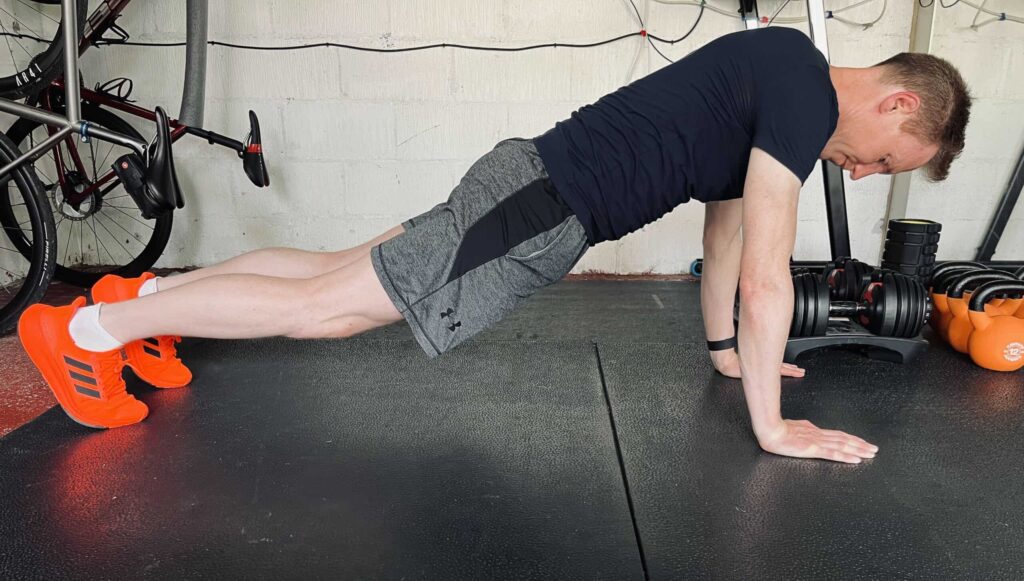
Keep a training journal
Use a calendar to schedule workouts, making sure you pick a time that works within your schedule and one you know you have the best chance of doing – for me, it’s getting up early, grabbing a coffee, and getting straight on the turbo.
The key is consistency.
It pays to keep track of your workouts, as this will provide you with important information about your progress toward your fitness goals.
A fitness log also helps you stay motivated and provides the necessary feedback to adjust your training program.
I personally use both Training Peaks (to collaborate with my fitness coach) and Strava for general analysis and progress monitoring.
Focus on Endurance Training
The off-season is a perfect time to focus on cycling endurance training, as this is the foundation for your cycling fitness.
Start with shorter, easier rides and gradually increase your time on the road or turbo to build up your muscular endurance.
You will need to ride at a comfortable pace that allows you to maintain a conversation with your riding companions, so aim for an RPE of three.
You should increase your ride duration by 10% and 15% each week. You can then incorporate longer rides of 2 to 3 hours which will build your endurance.
Training volumes need to increase gradually to give your body time to adjust. A good rule of thumb is that you shouldn’t increase your training volume by more than 10% per week.
This will help to avoid overtraining and prevent injury.
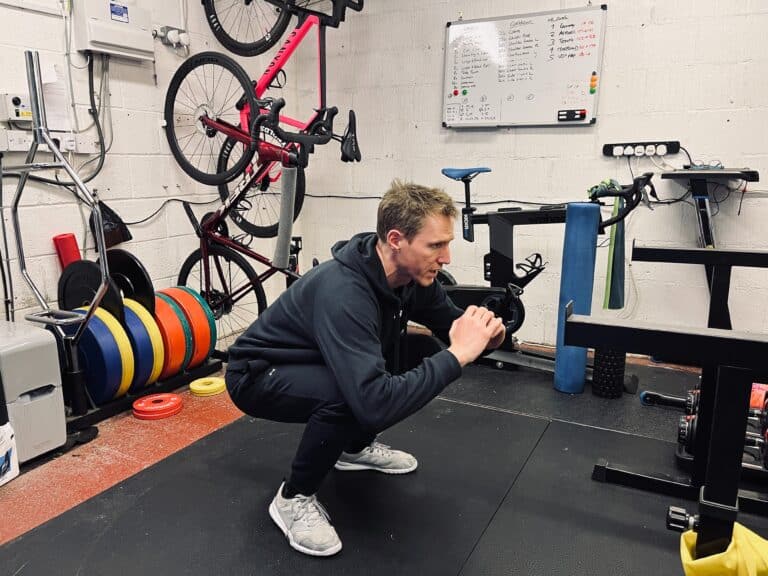
Incorporate Interval Training
Interval training has proven to be an effective way to help improve your cycling fitness and speed.
Avoid incorporating interval training at the beginning of your off-season as you want to have a solid endurance training base under your belt first.
Only plan on incorporating interval training after you’ve spent at least 3 to 4 weeks on long steady rides which have built up your aerobic capacity.
One of the main goals of the off-season is to give your body time to rest and recover from competitive cycling. For this reason, you should keep your interval training to a minimum as it is particularly taxing on the body.
Your interval training should focus on short intervals of 30 seconds to 2 minutes maximum, with at least two to three times that to rest.
Mix up your training program
It is important that you mix up your training. The interval length and recovery times should constantly be adjusted to keep your body guessing as well as to prevent you from getting bored.
Always monitor your progress, keeping track of your performance during the interval training sessions.
To ensure you’re measuring your heart rate accurately during your off-season training, incorporating a reliable heart rate monitor like the Wahoo TICKR is highly recommended.
This device will provide you with precise heart rate data before, during, and after your high-intensity sessions, allowing you to track how your body responds and adapts to your workouts.
The Wahoo TICKR is particularly useful during interval training, where monitoring your effort is crucial to avoid overexertion. With the TICKR, you can maintain the delicate balance between pushing yourself and listening to your body’s signals, ensuring a productive and safe off-season training period.
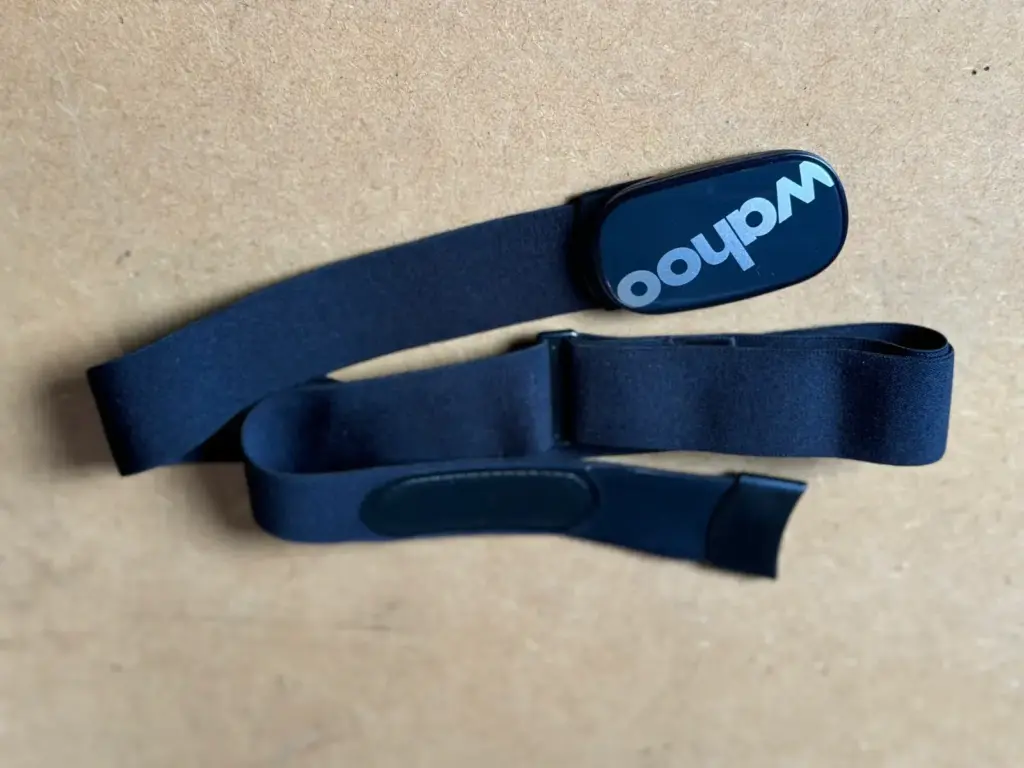
And don’t worry about the image below of the turbo trainer-bound cyclist; the only thing that should be startling is the progress you’ll make with the right tools at your disposal.

Recovery and Rest
Make sure to schedule rest days. One of the key things to remember is that while you are resting and recovering, your body is growing stronger. Ensure that you incorporate at least one rest day per week.
Reduce your weekly training
Your off-season training program should be significantly reduced compared to your race season. This allows your body to recover and reduces your overall risk of injury.
Massage and foam rolling are great additions, too, as they can help speed up your recovery time. Massage also reduces muscle soreness and helps to increase flexibility.
Nutrition and Hydration
For optimal performance, you must ensure that you stay hydrated, drinking ample fluid before, during, and after workouts. And include proper nutrition in your planning.
Remember that if you’re sweating profusely during heavy workouts, you must supplement with electrolytes and increased hydration.
For effective hydration during intense workouts, consider Nuun Hydration tabs. They replenish essential electrolytes lost through sweat and are a simple addition to your water. Stay hydrated, maintain electrolyte balance, and enjoy the variety of flavors Nuun offers.
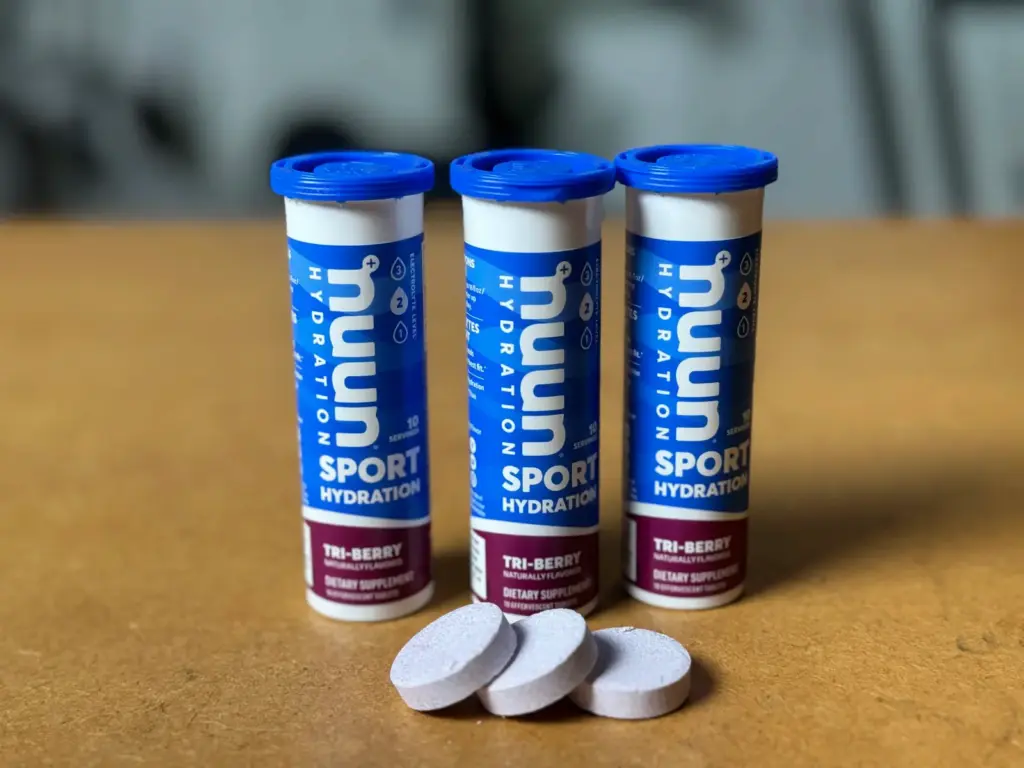
Aim to eat a high-protein meal or snack within 30 minutes of finishing your workouts. This helps to aid in recovery.
For a hassle-free way to meet your post-workout protein needs, Ascent Whey Protein is a great option. It’s crafted to provide a quick, high-quality protein source that’s essential for muscle repair and recovery.
Whether you’re short on time or need a convenient protein boost, mixing Ascent powder with water or milk can help you refuel effectively after your training session.
Your calorie needs change in the off-season as you are less active than you were in your active season. To maintain your weight, you will need fewer calories; otherwise, you run the potential of gaining weight.
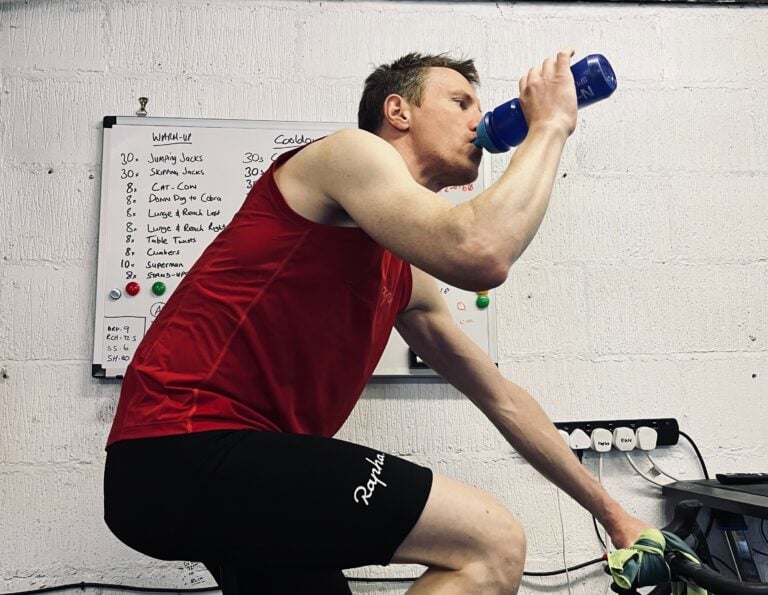
Cross-Training and Outdoor Activities
Cross-training is a great way to improve your cycling fitness, and it helps to keep you motivated.
You can try strength training in the gym with yoga and alternate riding off-road to make it a little more challenging and also help to improve bike handling.
You might also consider joining a cycling club as getting together with other cyclists also helps to keep you motivated.
After the off-season, start slowly to avoid injury, as your focus is recovery and recuperation when you resume training.
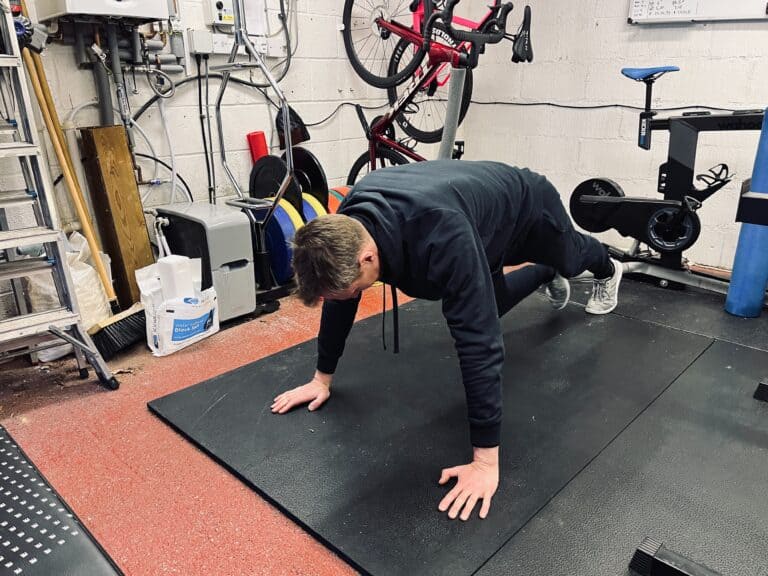
FAQs
How many days should you train in the off-season?
The off-season should be used for rest and recuperation. Experienced cyclists recommend resting longer if you raced hard during the year.
A minimum of one week off is necessary, followed by a month of unstructured, easy riding a couple of times per week.
Do I need off-season cycling?
The answer depends on how hard you raced and trained during the season. Professionals need at least a month off, but we can get by in a week or two.
Can I cycle 100 miles without training?
It’s all down to fitness levels! If you are really fit, you should be able to cycle 100 miles without training specifically for the distance. If your fitness levels are “questionable”, try a specific plan to train for a century ride.
